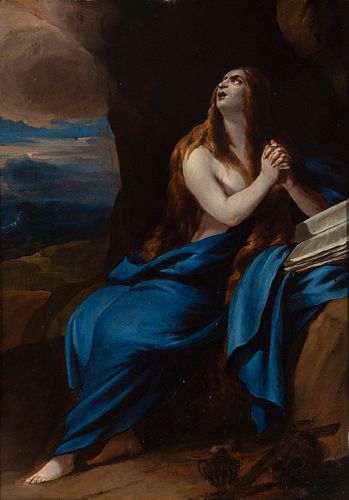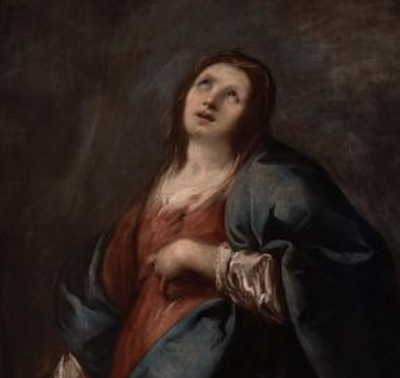Italian school of the mid-17th century. "Penitent Magdalene". Oil on copper. 18th century frame.
Lot 89
About Seller
Setdart Auction House
Carrer Aragó 346
Barcelona
Spain
Setdart Subastas was born in 2004 and is currently the first online art auction in Spain with solidity, prestige and reliability guaranteed by our more than 60,000 users. Setdart has a young, dynamic and enterprising team ready to successfully manage the purchase and sale of art works through custom...Read more
Estimate:
EUR€6,000 - EUR€6,500
$6,250 - $6,770.83
Absentee vs Live bid
Two ways to bid:
- Leave a max absentee bid and the platform will bid on your behalf up to your maximum bid during the live auction.
- Bid live during the auction and your bids will be submitted real-time to the auctioneer.
Bid Increments
| Price | Bid Increment |
|---|---|
| EUR€0 | EUR€10 |
| EUR€200 | EUR€25 |
| EUR€500 | EUR€50 |
| EUR€1,000 | EUR€100 |
| EUR€3,000 | EUR€200 |
| EUR€5,000 | EUR€500 |
| EUR€10,000 | EUR€1,000 |
| EUR€20,000 | EUR€2,000 |
| EUR€50,000 | EUR€5,000 |
About Auction
By Setdart Auction House
May 31, 2021
Set Reminder
2021-05-31 08:30:00
2021-05-31 08:30:00
America/New_York
Bidsquare
Bidsquare : OLD MASTERS - Day 1
https://www.bidsquare.com/auctions/setdart-auction-house/old-masters---day-1-6998
Setdart Auction House sofia@setdart.com
Setdart Auction House sofia@setdart.com
- Lot Description
Italian school of the mid-17th century. "Penitent Magdalene". Oil on copper. 18th century frame. Measurements: 38 x 27.5 cm; 45.5 x 36 cm (frame). In this work we can appreciate the representation of Mary Magdalene, mentioned in the New Testament as a distinguished disciple of Christ. A rocky landscape opened to the right by a landscape is the scene where the painter places the saint, a woman dressed in a blue tunic that slides down her body revealing her torso. She appears full-length, turned with respect to the viewer, with her face almost in profile, raised to contemplate the divinity located in the upper left margin. According to the Gospels, he housed and materially provided for Jesus and his disciples during their stay in Galilee, and was present at the Crucifixion. She was a witness of the Resurrection, as well as the one in charge of transmitting the news to the apostles. She is also identified with the woman who anointed the feet of Jesus with perfumes before his arrival in Jerusalem, so her main iconographic attribute is a knob of essences, like the one shown here. The story of this saint serves as an example of Christ's forgiveness, and conveys the message of the possibility of redemption of the soul through repentance and faith. While Eastern Christianity especially honors Mary Magdalene for her closeness to Jesus, considering her "equal to the apostles," in the West the idea developed, based on her identification with other women in the Gospels, that before meeting Jesus she had engaged in prostitution. Hence the later legend narrates that she spent the rest of her life as a penitent in the desert, mortifying her flesh. In art she was preferably represented in this way, especially in the 17th century, a time when Catholic societies felt a special fascination for the lives of mystics and saints who lived in solitude in wild places, dedicated to prayer and penance. The theme of the Magdalene, moreover, offered the possibility of representing a beautiful woman who shows some parts of the anatomy then considered taboo, such as the feet or the breast, but who in her respects decorum because she is mortified flesh that expresses repentance for her past sins.
- Shipping Info
-
In-house shipping available. Please inquire at admin@setdart.com.
-
- Buyer's Premium



 EUR
EUR CAD
CAD AUD
AUD GBP
GBP MXN
MXN HKD
HKD CNY
CNY MYR
MYR SEK
SEK SGD
SGD CHF
CHF THB
THB














